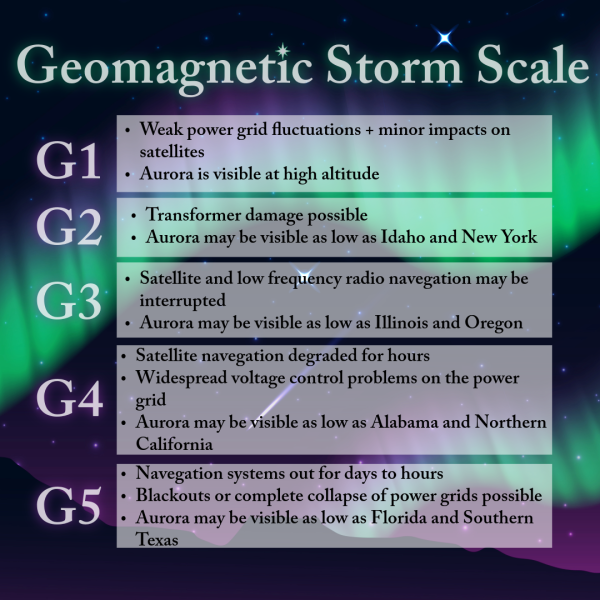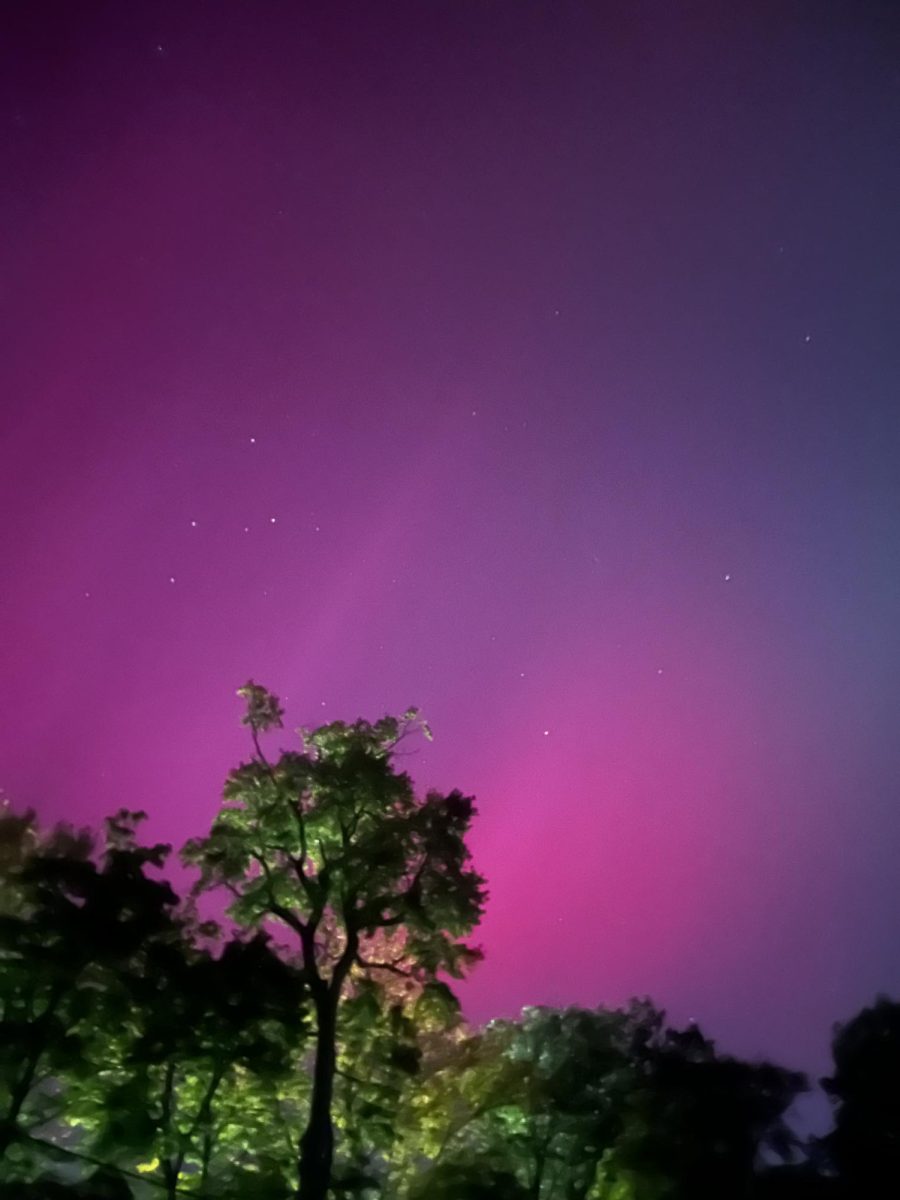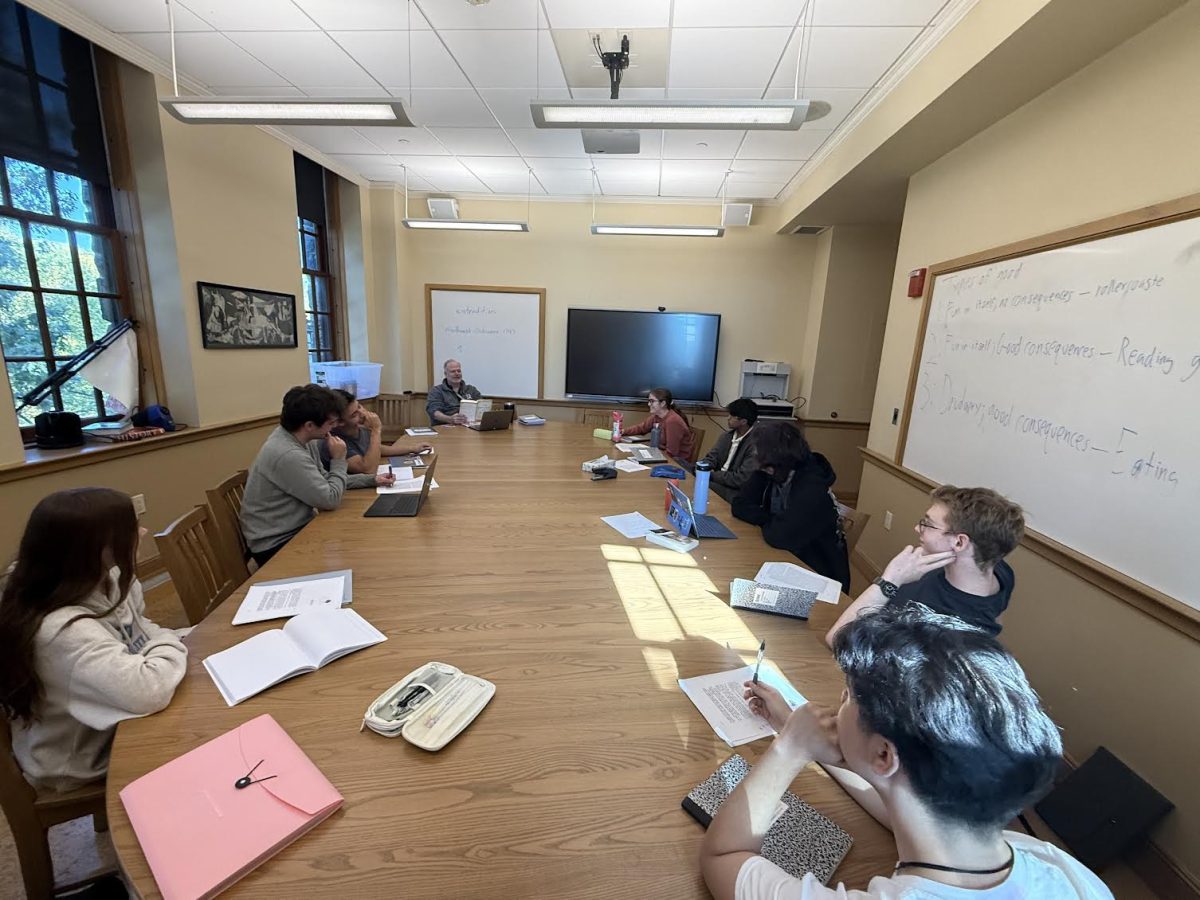Beautiful streaks of blue and green illuminated the sky. This once-in-a-lifetime phenomenon, which people often travel miles to see, became visible from our backyards on a seemingly random Thursday night.
Aurora Borealis, typically referred to as the northern lights, is a natural light display caused by charged particles from the sun hitting gases in the Earth’s atmosphere. They are typically visible around Finland, Sweden, Norway, Iceland, Greenland, and Canada – which is why people in the northern hemisphere of the United States, parts of Mexico, Turkey, parts of the United Kingdom, and some parts of the Bahamas were shocked to see the lights from their homes on Oct 10, 2024.
Physics and astronomy teacher Bill McLay said, “I have seen auroras a few times in my life. Each time I am in awe of how the different colors form. It is truly one of the amazing events in nature. I imagine people who see them regularly start to lose their appreciation of them, which is why it is so special for us!”
The auroras on Oct 10 were brought on by a geomagnetic storm caused by a strong coronal mass launched at Earth by a solar flare the day before. A geomagnetic storm is described as “a major disturbance of Earth’s magnetosphere that occurs when there is a very efficient exchange of energy from the solar wind into the space environment surrounding Earth.”
As the sun (a ball of energy and plasma) spins, its gigantic magnetic field begins to get twisted up, which can create sunspots. Sunspots are cooler regions on the surface of the sun that have their own chunks of the magnetic field that can break off from the larger magnetic field. The break-off can happen in three different forms, but one break-off, a coronal mass ejection, is responsible for the recent events. They rarely are directed towards Earth, since space is so large. This is a positive thing since a coronal mass ejection has enough energy to damage satellites and electrical grids.
When any geomagnetic plasma from the sun hits our magnetic field, the charge particles within it are attracted to Earth’s magnetic poles, the strongest areas of our magnetic field. As they are pulled in, they collide with gases in our atmosphere, producing different-colored lights.
When the coronal mass ejection hits our magnetic field, it compresses it, stripping some of it away. This pressure on the magnetic field and the stripping away of pieces of it allow the auroras to be seen much farther south of the pole region.

“Imagine pushing your finger on top of a beach ball, it presses the top down a little. Now, imagine using your whole hand, it compresses it more, this is the same idea,” said Mr. McClay.
The geomagnetic storm reached G4 levels. The G-scale, used by the U.S. National Oceanic and Atmospheric Administration, ranges from G1, a weak storm, to G5, an extremely strong storm.
A storm of this level occurs approximately 60 days out of 11 years; that’s 4018 days. A geomagnetic storm of this magnitude hasn’t occurred since 2005.
The display of the auroras lasted for about 20 minutes before fading away, leaving only our typical starry night sky.
Despite their brevity, the auroras left many students in astonishment.
“Seeing the aurora at my house was something unexpected and surreal. Thanks to Mr. McLay, I got to see them for the first time,” said senior Ethan Niewinski.



















